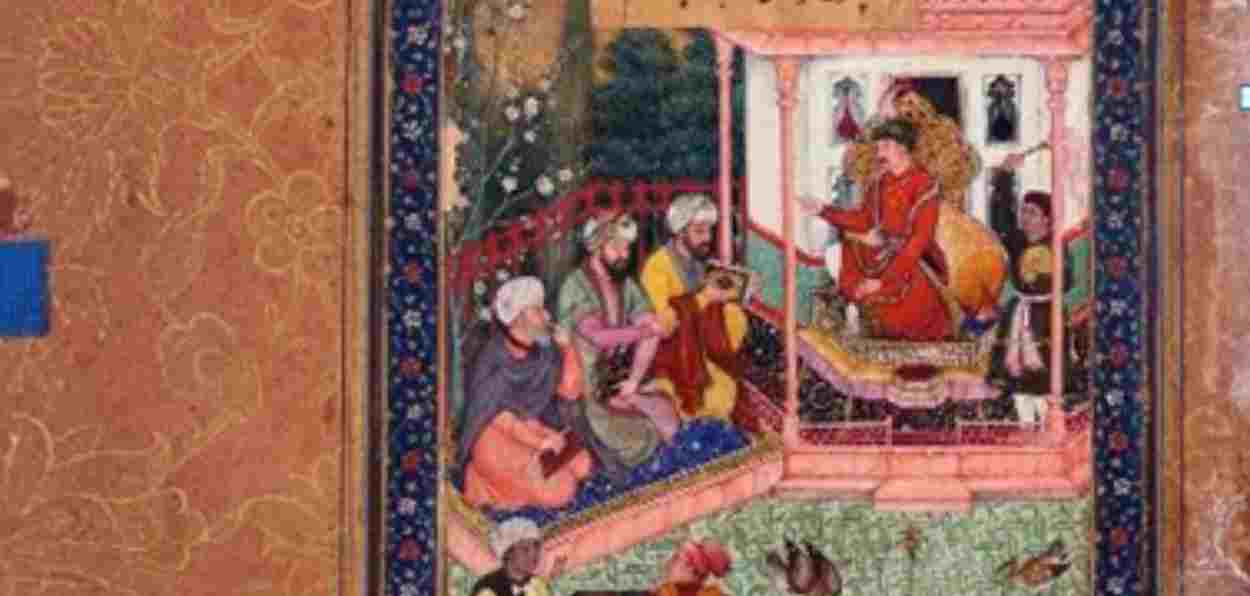
Sanam Ali Khan
Mughal emperor Akbar had a secular and democratic outlook. He promoted and rewarded talented artists, and painters without discriminating against anyone based on religion or caste. The imperial taswirkhana of Akbar (1556-1605) was a hub of cultural expression and showcased customs and traditions. Today these paintings offer invaluable glimpses into the daily lives of the people of that era and are a testament to their way of life.
This marked the beginning of a glorious era in Mughal art, where painters from different religious and regional backgrounds collaborated and contributed to the harmonious religious and cultural growth of society.
Historian Abul Fazl, who was Akbar’s minister gives an account of the Mughal Emperor’s great interest in the art of painting including the finest works in the king's personal library in his book in ‘Ain-I-Akbari.
At Rampur Raza Library and Museum’s comprehensive collection there is a rare 16th-century illustrated manuscript of diwan-i-hafiz. It’s a personal manuscript of Akbar and he always kept it with him. It contains 11 painted folios by celebrated non-muslim court painters. Some paintings are three-dimensional and reflect the impeccable standard of painting in the 16th century.
Details of the manuscript- copied in 1575 in Khurasan, illustrated 1585-95 probably in Lahore also contains hundreds of verses in praise of the emperor. Provenance was purchased by Muhammad Kalb-i-Ali Khan Nawab of Rampur from Muhammad Akram, the grandson of Hafiz Khurshid khushnavis lakhnavi (the calligrapher of Lucknow) on 2 January 1857.
Diwan-i-hafiz, is a manuscript measuring 26.7cm x 19.5cm,, has 404 pages and dates to 1575 – 80 A.D.
The manuscript of Diwan-I-hafiz contains 11 masterpiece miniatures Paintings. The names of celebrated court painters who embellished and illustrated this manuscript are Kanha, Sanwla, Manohar, Narsingh and Chitr.
These paintings act as a bridge connecting us to our glorious past.
Khwaja Shamsuddin Muhammad Hafiz-i Shirazi known by his pen name Hafiz (1325-1389) was a renowned Persian lyric poet whose collection of poems is known as Diwan-i-hafiz. His poetry is popularly used for fortune-telling. The Classic work of Hafiz is a source of Inspiration – his poetry is read and loved in India.
He is also credited with perfecting the ghazal or ode form into poetry, Hafiz teaches us how to get the most out of our lives. He was a mystical poet who helped human beings with his poetry to lead a better life. Even today people in the Persian-speaking world learn his poems and widely use them as proverbs and sayings.
Hafiz stands alone among Persian poets in his masterful use of metaphorical language. His poetry is filled with verses that possess multiple meanings, making them ideal for divination purposes. Many turn to Hafiz's divan for guidance, as it is believed that his words have the power to tap into their inner thoughts and emotions. It is truly remarkable how Hafiz seems to have a profound understanding of their minds, earning him the nickname "Lesan-alghayb," or the tongue of the unseen realms.
One recites a prayer ‘Ai hafiz-i-shirazi, tu kaashif har raazi, tu ra qasam e shaakh e nabood, be guh har che hast raaz, Bismillah ir rahmanir raheem.’ By making a wish and opening a book with a serene and sincere heart what is expressed in that poem is believed to be the interpretation of the wish or whether or not it will come true.
Diwan i-Hafiz miniatures are a big world of small well well-composed paintings, for art students, academicians, scholars, and historians they are the priceless portable artistic heritage of small masterpieces. The signed masterpieces of non-Muslim artists are in Persian which suggests that many artists knew Persian as Raja Todarmal introduced Persian as the official language of court.
ALSO READ: Who hosted Narendra Modi during his 10-day 'Mission Kashmir' in 1993?
It is a very interesting fact the conservation and restoration of this manuscript were done by a non-Muslim and a Muslim in a team. The manuscript created in the royal atelier of the golden Mughal era now graces the collection of Rampur Raza Library.
The author is an Art conservator at the Rampur Raza library
